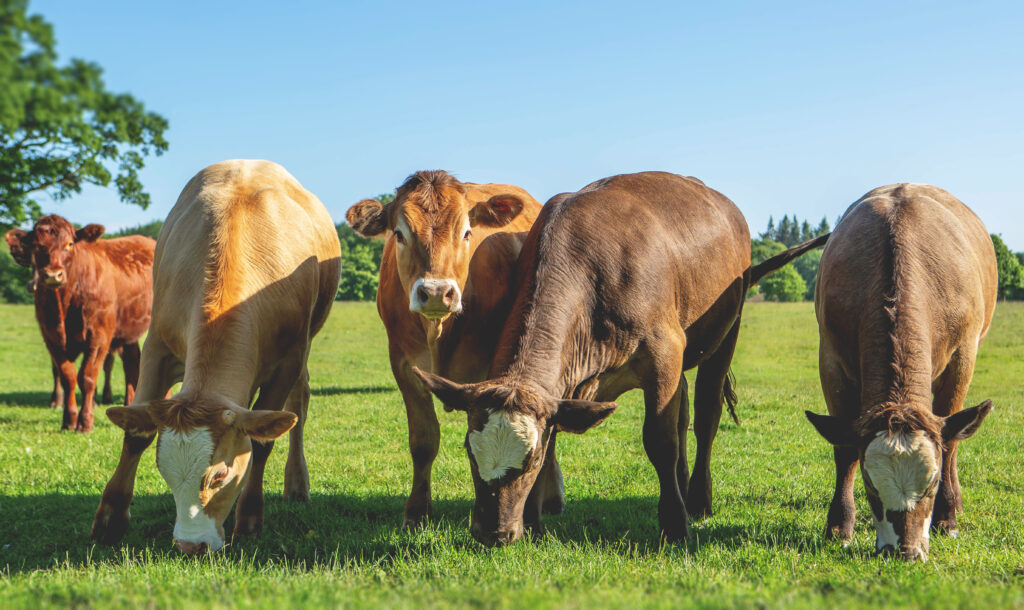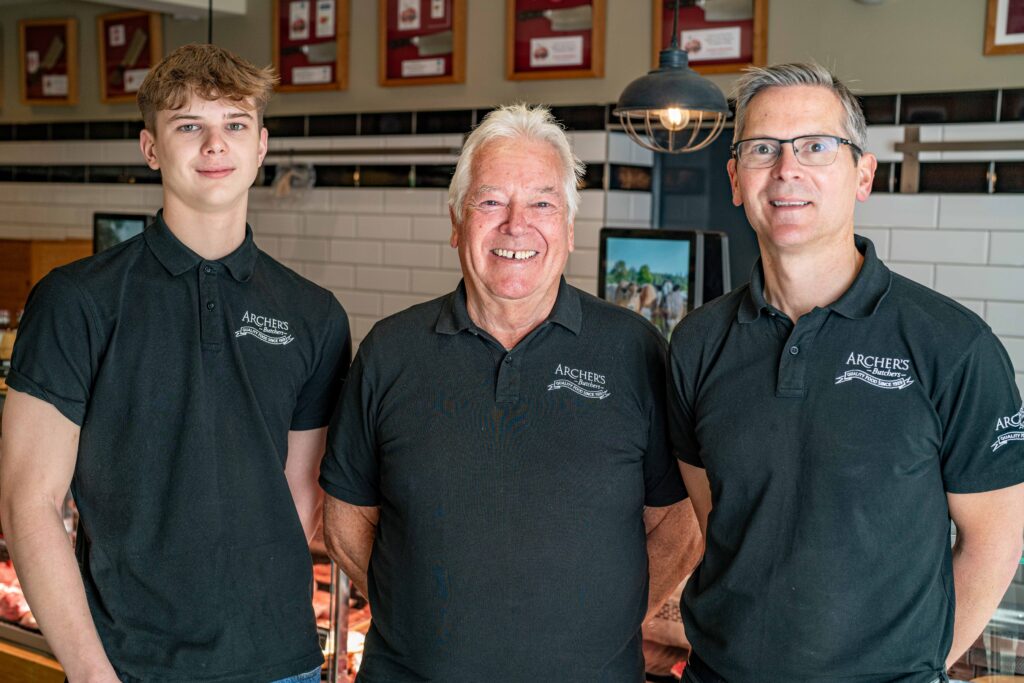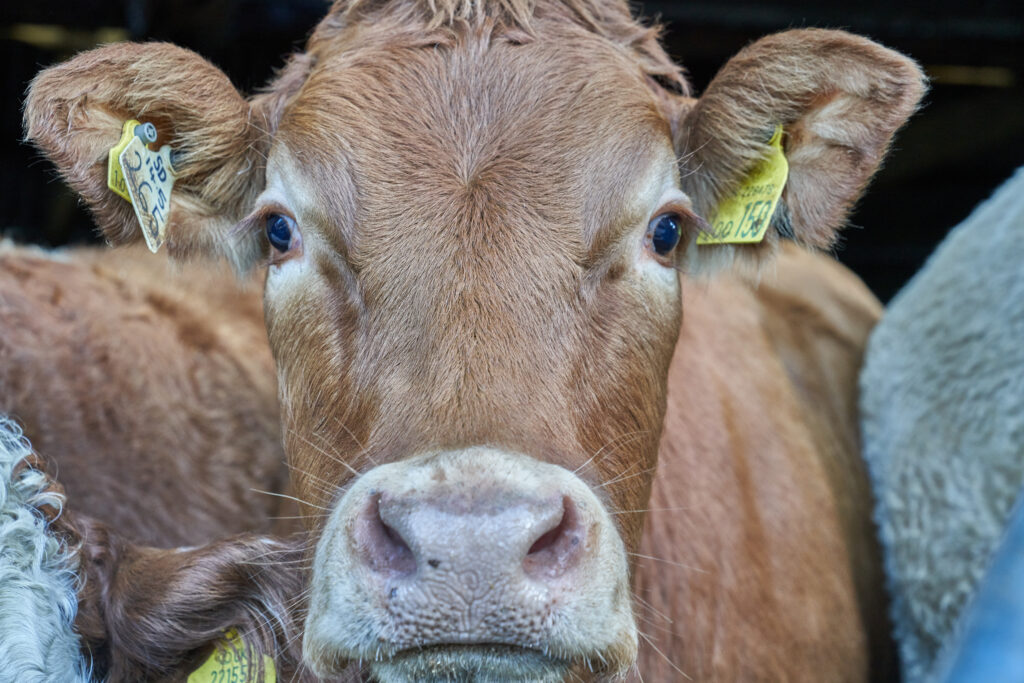The UK farming sector, the backbone of the nation’s food supply remains in a storm of unprecedented challenges with a triple threat of high inflation, a burgeoning cost of living crisis, and the aftermath of Brexit. It’s a situation that’s pushing the meat industry into uncharted territory.
Inflation in the UK has surged to worrying levels, with agricultural inputs rising by nearly 50% since 2019. This huge cost inflation is threatening to trigger a slump in UK food production, as food suppliers struggle to absorb these costs.
With the economy producing fewer goods and services at a higher cost per unit, the ability to grow is being severely hampered. cost of living crisis, rising costs including fertiliser prices tripling since 2019 and feed and diesel costs increasing by 75%, are hitting farmers hard. Food inflation is over 15% and shows no sign of easing, putting additional pressure on an already strained sector.
The Brexit Factor

Brexit, while not the sole cause of Britain’s economic woes, has undoubtedly compounded the problems. Post-Brexit regulations have added bureaucracy, potentially leading to higher prices in UK supermarkets. Supply chain issues have led to increased delivery times and costs for UK imports, a burden likely passed on to consumers. The struggles faced by UK farmers are complex and multifaceted, reflecting the broader economic challenges facing the country. The tumultuous journey ahead requires collective action, understanding, and forward-thinking solutions. As we navigate this difficult period, let’s remember the importance of our farmers and butchers and the critical role they play in feeding the nation. The poultry industry, pig farms, and horticulture businesses are all feeling the pinch of high energy costs and lack of staff, adding to the strain on UK farmers.
Navigating the Challenges with nose to tail butchery.
UK butchers are resilient and innovative, but the combined impact of high inflation, the cost of living crisis, is testing their mettle. Something needs to be done and one viable option for our customers is the very historical practice of eating nose to tail, which is seeing a resurgence, not only in the Butchery Sector, but also amongst some of the world’s most influential chefs and highest quality restaurants where Nose to Tail and offal creations has become increasingly fashionable for high-end foodies, with examples from’
LYLE’S – The home of legendary chef James Lowe
FKABAM – Lee Tiernan’s rebranded Black Axe Mangal
BORKONYHA & TEXTURA – Michelin Star dining from head chef, Ákos Sárközy near St. Stephen’s Basilica in Budapest
Nose to Tail Changes Family Dining
Many families have had to adapt their meat purchasing habits. The rising prices of beef, poultry, and other meats have driven consumers to seek alternative proteins or change their consumption patterns.
According to various sources, some of the changes include:
Switching to cheaper protein sources: Many families are opting for less expensive proteins like chicken, pork, with the increased cost of beef and other high-priced meats.
Buying in bulk: To take advantage of lower per-unit prices, some consumers are buying meat in larger quantities and freezing it for future use. We offer outstanding value on our meat packs, that provide a diverse selection of meats, but all to the same very high standards.
Opting for lesser cuts: Instead of prime cuts, some families are opting for cheaper, lesser-known cuts of meat. These can be just as tasty when prepared correctly and offer significant savings. This is where Archers ‘Nose to Tail Butchery’ has become very popular.
What is nose to tail butchery ?

Nose to tail cooking, a practice that involves using every part of the animal in food preparation, holds a range of benefits for both customers and the environment and has many benefits, not only for the Butcher and the customer. The hesitance to consume offal and nose-to-tail cuts of meat can stem from a variety of factors:
Cultural: In many Western societies, offal and nose-to-tail cuts are not traditionally part of the diet, leading to unfamiliarity and discomfort with these types of meat. Certain cultures may also view these parts as lower status or unclean.
Taste and Texture: Organ meats often have a strong, distinct flavor and unique texture that can be off-putting to those accustomed to more mainstream cuts of meat. The taste is often described as more mineral-like or gamey, which some people find unappealing.
Perception and Presentation: There’s a psychological factor at play as well. Many people are uncomfortable with the idea of eating certain parts of an animal, especially if they resemble their original form. This is particularly true for organ meats like heart, liver, and kidneys.
Health Concerns: Some people avoid offal due to health concerns. For example, certain organ meats can be high in cholesterol or may accumulate toxins if the animal was exposed to harmful substances.
Preparation Difficulty: Finally, offal and other unusual cuts of meat often require careful preparation to be palatable, which can be intimidating for home cooks.
However, it’s important to note that many of these barriers are being broken down through education, culinary innovation, and the efforts of chefs and food advocates promoting nose-to-tail eating for its sustainability and nutritional benefits. Different parts of an animal offer diverse nutrients. Organ meats, for instance, are rich in vitamins and minerals that aren’t as prevalent in muscle meats.

Benefits for the Environment:
Reduced Waste: Utilising every part of the animal significantly reduces waste, which aligns with sustainable living principles.
Lower Carbon Footprint:
By using the whole animal, fewer animals are needed for the same amount of meat, thereby reducing the overall demand and the associated carbon footprint of raising livestock.
Promotes Ethical Animal Practices:
This approach respects the life of the animal by ensuring none of it goes to waste. It also encourages more humane farming practices, as demand increases for quality, ethically raised animals.
Look no further than Google and you’ll be overwhelmed with nose to tail recipes, which in itself is testament to how the current economic climate and ecological climate is challenging families to rethink their shopping habits and find creative ways to stretch their cookery in a bid to save precious money and the planet we live on.
Fergus Henderson, set out his stall when he opened St. John in 1995, now one of the world’s most admired restaurants. His Nose to Tail books are full of exhilarating recipes for dishes that combine high sophistication with peasant thriftiness.
The Complete Nose to Tail, is a stunning collection of nose-to-tail recipes includes traditional favourites like Eccles cakes, devilled kidneys, and seed cake with a glass of Madeira.
There are many St. JOHN classics for more adventurous gastronomes – Roast Bone Marrow and Parsley Salad, Deep Fried Tripe and Pot Roast Half Pig’s Head to name but a few.
As we continue to navigate these uncertain times, these new habits may become the norm for many households.
About Archers Butchers

Established for more than 90 years as a third generation, family-run business, ARCHERS’s are committed to continuing time-honoured butchery techniques and cater for both the traditional and changing tastes of our customers.
Our mission centres around being considered champions of high quality, locally produced meat rearer with high welfare standards and sustainability at the forefront of our business.
We value the relationships we’ve built with local farmers and suppliers and staunchly support local business. While our commitment to customer care is second to none, we uphold the highest animal welfare standards and produce top-quality and sustainably-sourced meat. With a reputation built on quality, ARCHER’S has become synonymous with butchery in the local area and beyond.
Whether buying in our high street shop or online, ARCHER’S continue to provide products that are full of flavour ensuring customers know exactly what they’re consuming and where the meat comes from.


